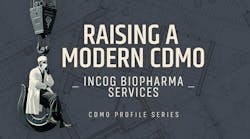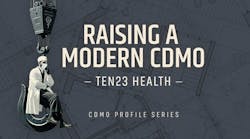It’s an exciting time to be in the contract manufacturing organizations (CMO) business as more and more branded pharmaceutical producers seek strategic and competitive advantage by outsourcing production and other key services including research, development, as well as excipients, filling and packaging services and more. CMOs are making some big plays out there and scoring especially well with regulators, making extra points by actually helping the FDA’s refs understand better how cGMP is being practically applied in the field. Recently I was exposed to some FDA data that revealed a real trough in inspection activity from 2005 - 2007 — a gap that one of my trusted contributors surmised was the unintended effect of budget cuts. The ripple effect, he said, of this scarcity of resources was that the agency and inspectors were stretched to a point that impinged on the agency’s ability to understand, articulate and execute on its cGMP compliance regime.
FDA’s CDER director Janet Woodcock perceived a disconnect: According to industry media reports in the wake of her ISPE appearance, “To my knowledge, there’s no detailed common understanding within the United States about what GMP compliance exactly means,” admitting perhaps controversially, that “In fact, the effectiveness of our inspection programs is unknown — even to me.” She commented that there are not many written standards, and when they are written, they’re high-level. “As a result, they don’t tell you whether [the industry’s] operations are going to make the grade or not.” In other words, even at the highest levels to both regulator and regulatee, cGMP compliance is open to some interpretation. Fortunately for the industry, Contract Pharma is becoming really good at it, and in the process, helping regulators regulate from a better base of knowledge and understanding.
Since their regulatory debut, both the industry and its regulators have worked to introduce and refine the application of cGMP principles in pursuit of quality. In the long march toward compliance, pharmaceutical companies accepted the challenge and got busy adapting and implementing cGMPs into their operations, albeit with varying degrees of success. For many companies, compliance was problematic because implementing cGMPs across aging facilities with outdated, obsolete processes and operational procedures proved to be both economically and technically challenging to even the most prominent, financially healthy organizations.
But a funny thing happened on the way to the patent cliff, the market for contract services heated up, and with it competition for the BIG dollars coming out of Big Pharma as it pursued new strategies to cope with its own changing markets. That competition, naturally, has bred organizations that are, well, competitive. Oh, Big Pharma still has plenty of juice operationally, but in striving for its business, Contract Pharma has clearly shown how well it can manage risk and quality across the enterprise and implement cGMP to achieve operational excellence — and make some money doing it.
Check out the Pharmaceutical Manufacturing’s 2014 Contract Services Playbook.





